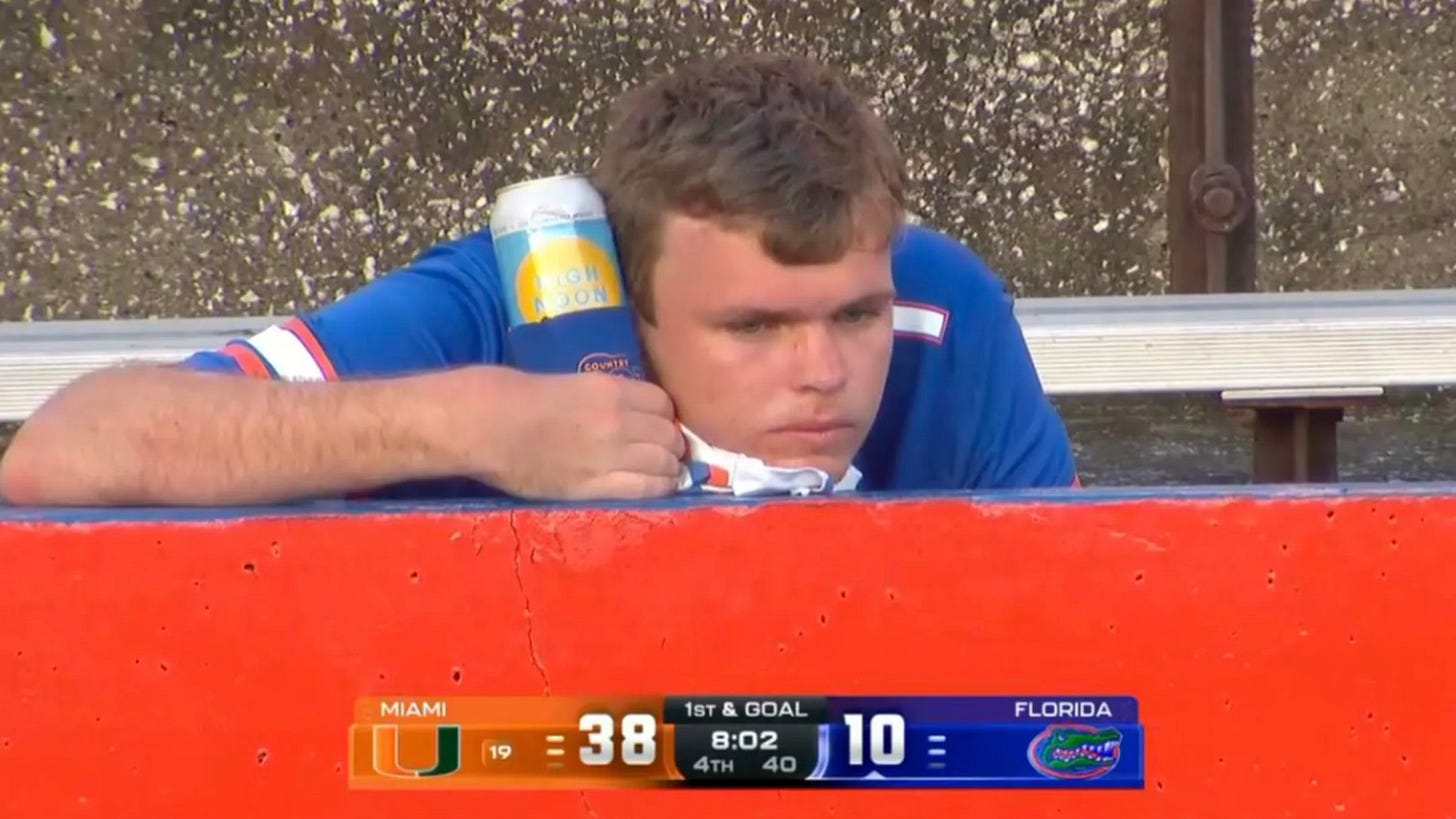Three lessons in kinetic communication courtesy of college football
Examples from Florida Gators' (poor) performance in their opening game
One of the less common forms of communication people think about (though we are immersed in it on a constant basis) is kinetic communication. This is communication through movement (including a lack of it). Body language, stage presence, running in a specific direction with intention, and executive presence are examples of kinetic communication.
Saturday we were watching the University of Florida (my undergrad alma mater) Gators take on the University of Miami Hurricanes. This has historically been a game with high expectations by all involved. Lots of passion and pride are typically on display during these match-ups. Along with tense and heated competition between these teams.
Let’s just say in this game the Gators succeed in securing a loss.
Kinetic communication is how we message people through our movements. It can be in combination with spoken and written words. It is most always accompanied by visual communication (colors, shapes, symbols, etc.) in some fashion. Even without being aware a person is doing it, this form of communication conveys values, decisions, and capabilities amongst other information. Let’s go over some examples from this game, which the Gators lost 41-17. At home.
Example #1
Kinetic communication action: Not once, but twice penalties were called on Gator players for hitting the quarterback (roughing the passer). In each of these cases, the Gator player had plenty of time to stop their rush on the passer. The cost? Miami benefitted from a first down and fifteen yard gain. For the first penalty, Miami would likely had to punt the ball to the Gators.
Kinetic communication message: Each player demonstrated a lack of self-discipline and awareness of what was going on around him on the field. As a result, their opponent benefitted in big ways. This problem with discipline existed last season. That these errors continue indicates poor leadership and training by Gator coaching staff.
Example #2
Kinetic communication action: These next examples demonstrate kinetic communication by non-movement. Too many times throughout the game Gator players just stopped playing on offense and defense. It happened when players should have been protecting the quarterback. It happened when chasing a Miami player running with the ball. Gator players just quit playing and running. It was so painfully obvious.
Kinetic communication message: These incidences of non-movement state one thing above all else. These players just did not care to play. They let opponents run off without chase. Others just decided to not block their opponents. This behavior indicates a rot within the organization. Florida has three football championships. It has state of the art facilities. And a fan base who does not take losing lightly. And giving up even less so.
Example #3
Kinetic communication action: Late in the game Florida’s starting quarterback was injured and our freshman back-up ( DJ Lagway) was called up to play. A Gator touchdown followed his introduction into the game. His teammates played football. Blocks were made. Balls were caught. Players ran down the field. Points were added to the scoreboard.
Kinetic communication message: Why such a turn in enthusiasm with Lagway’s college football debut? That’s an unknown at this point. But they performed (at least during that possession) and scored a touchdown. It’s not good news for starting quarterback Graham Mertz (even if it’s not all his fault) leadership. The team’s energy and commitment elevated when Lagway stepped into the game.
The messaging was there for all watching the game. Undisciplined players. Players who seemed unmotivated to play for the starting quarterback. More points scored against the Gators than in any home opener. Knowing this information, along with two previous losing seasons under the current coach, what decisions would you make as head of the athletic program?




